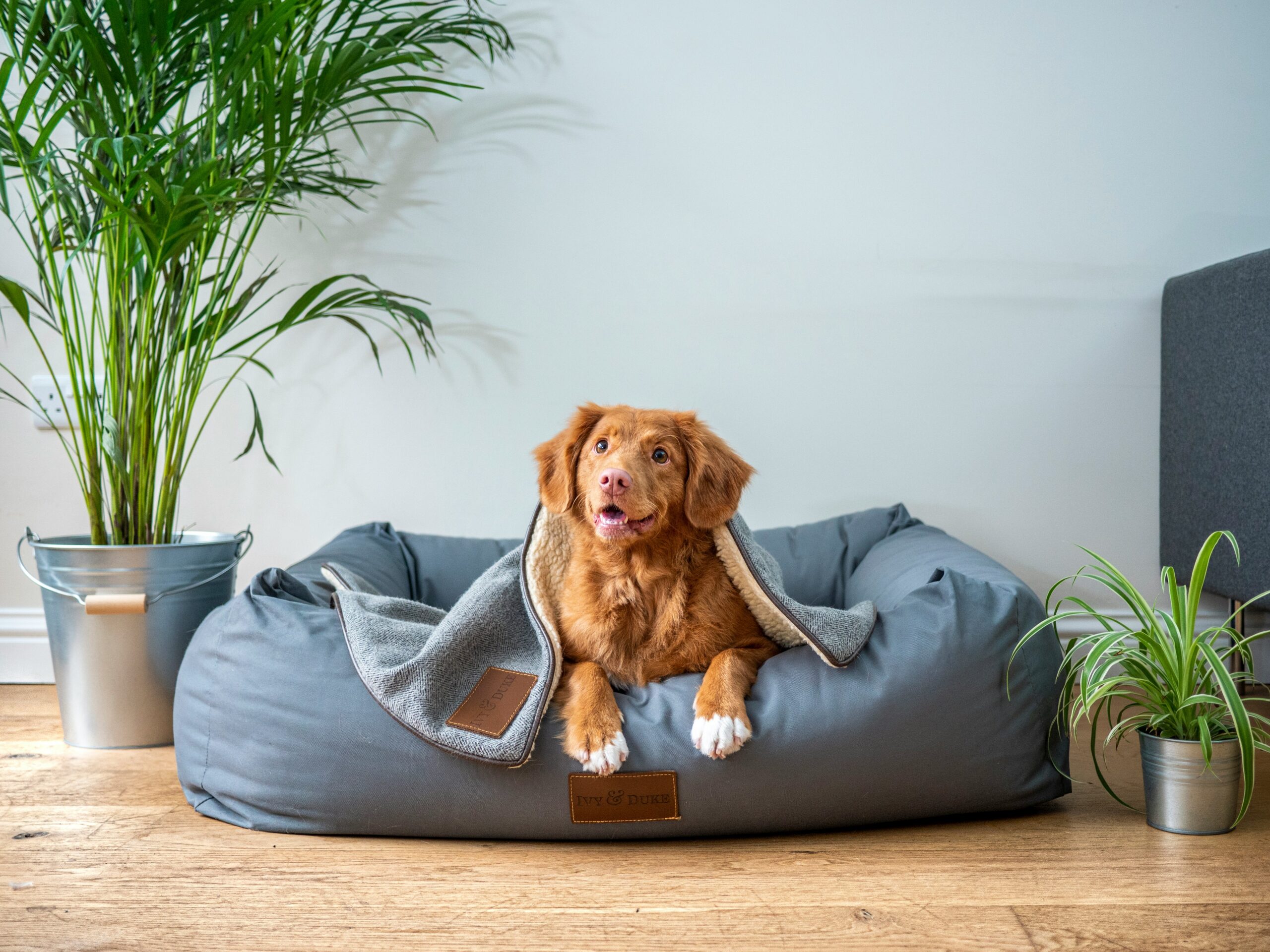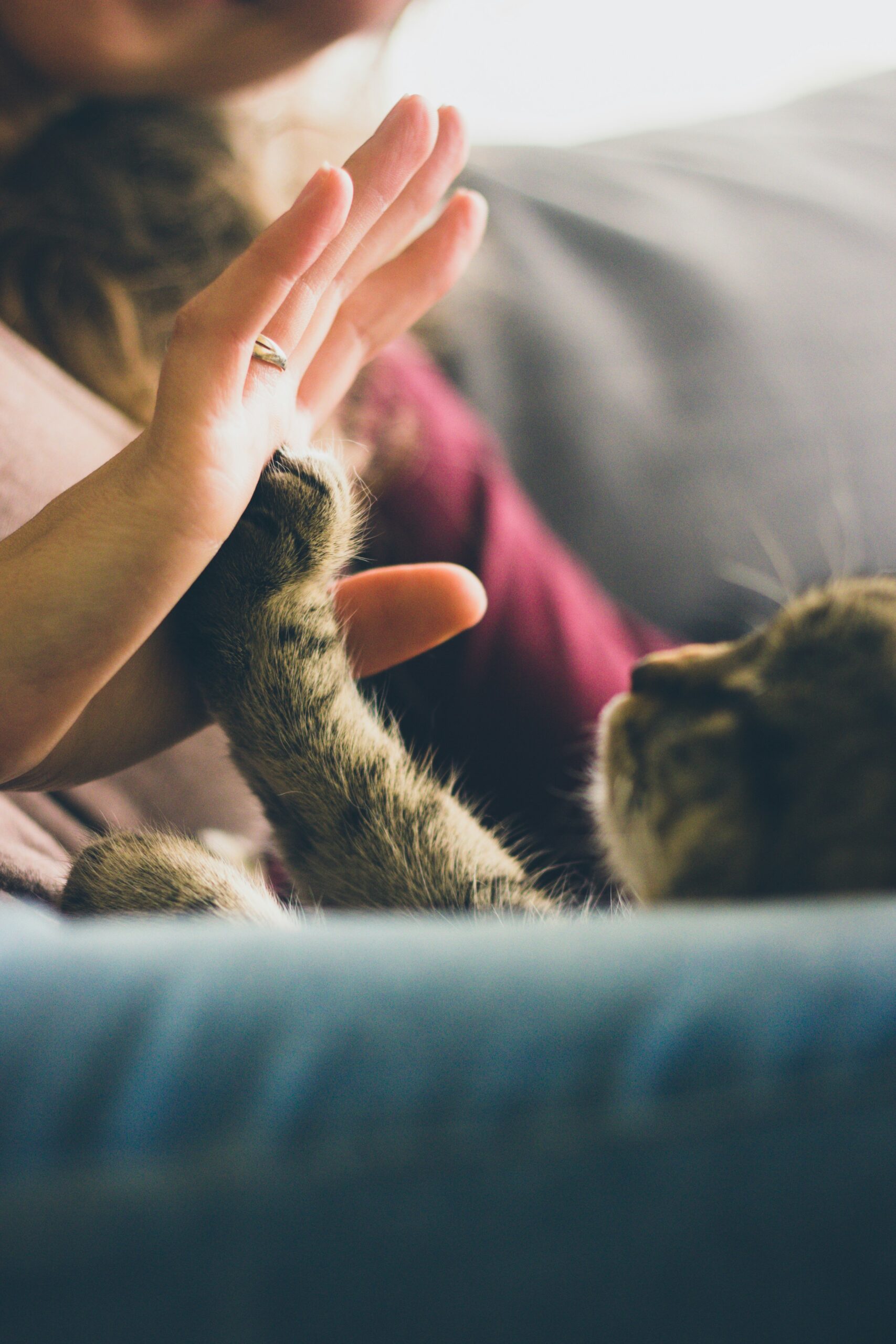Creating a Safe and Stimulating Environment for Your Pet
Introduction to Pet Well-being
The concept of pet well-being extends beyond simply providing food and shelter. A safe and stimulating environment plays a crucial role in ensuring the health, happiness, and longevity of our pets. Indeed, pet well-being is a multifaceted subject that encompasses physical health, mental stimulation, and emotional contentment. A well-rounded approach to pet care is fundamental in fostering an environment where pets can thrive.
A pet’s environment significantly impacts its physical health. Factors such as clean living spaces, regular veterinary care, and appropriate nutrition are indispensable. However, the environment also involves safe spaces for physical activities, regular exercise, and spaces for relaxation. An active pet is not only healthier but also less prone to obesity and related diseases. Furthermore, a secure environment minimizes the risk of accidents and injuries, ensuring pets can move freely and safely within their surroundings.
Mental stimulation is another critical component of pet well-being. Pets, much like humans, require mental challenges and social interaction to stay mentally fit. Engaging toys, interactive games, and socialization opportunities with both humans and other animals can significantly enhance a pet’s cognitive health. These activities prevent boredom and associated behaviors such as excessive barking, chewing, or scratching, and they help to build strong emotional bonds between pets and their owners.
The emotional aspect of pet well-being should not be overlooked. Emotional health is closely linked to a pet’s environment and the interactions they experience. A stimulating environment that includes affection, routine, and positive reinforcement can alleviate stress and anxiety, fostering a sense of security and happiness. An enriched lifestyle for pets leads to improved behavior, increased trust, and a higher quality of life.
By focusing on these elements, pet owners can create a holistic environment that supports the overall well-being of their pets, ensuring they lead healthy, joyful, and fulfilling lives.
Understanding Your Pet’s Needs
Creating a safe and stimulating environment for your pet begins with understanding their unique needs. Each type of pet, whether it be a dog, cat, bird, small mammal, or reptile, has specific dietary, exercise, social, and mental stimulation requirements that are essential for their well-being.
For instance, dogs require a balanced diet rich in proteins, vitamins, and minerals to maintain their energy levels and overall health. Regular exercise, such as daily walks or playtime, is crucial for their physical fitness and mental stimulation. Moreover, dogs thrive on social interaction, both with humans and other dogs, which helps in reducing anxiety and promoting emotional well-being.
Cats, on the other hand, are obligate carnivores that need specific nutrients found only in animal-based proteins. While they are more independent compared to dogs, they still require mental and physical stimulation. Interactive toys and opportunities to climb or scratch can help keep a cat engaged. Social interaction, even if sporadic, is also important for a cat’s mental health.
Birds have highly varied needs depending on the species. Most require a diet that includes seeds, fruits, and vegetables. Birds also need considerable mental stimulation and physical activity, often achieved through flying or using perches and climbing structures. Social interaction is vital, especially for parrots, which are known to form strong bonds with their owners.
Small mammals such as rabbits, guinea pigs, and hamsters require a balanced diet rich in fiber. They need space to explore and exercise, which can be provided through secure enclosures with appropriate toys. Social interaction varies amongst different small mammals; for instance, guinea pigs are highly social and thrive in pairs or groups, while dwarf hamsters prefer solitude.
Reptiles, including turtles, snakes, and lizards, have distinct dietary needs that may include insects, small animals, or specific vegetation. Their environment requires precise temperature and humidity control, along with appropriate substrate and hiding spots. While social interaction may not be central to a reptile’s health, providing stimulation through environmental enrichment is necessary.
Understanding your pet’s needs is the foundation of creating an environment that not only keeps them safe but also supports their physical and mental well-being. Tailoring these aspects according to the specific type of pet is key to ensuring their happiness and longevity.
Safety First: Pet-Proofing Your Home
Creating a safe environment for your pet necessitates cautious attention to potential household hazards. Various common household items can pose risks, so pet-proofing your home is essential. To begin, assess each area of your home, identifying and mitigating potential hazards.
Firstly, secure all toxic substances. Common items such as cleaning supplies, medications, and certain foods can be harmful if ingested by pets. Store these in cabinets that are either out of reach or have childproof latches. Additionally, be mindful of plants within your home as several varieties, including lilies, oleander, and philodendron, are toxic to pets.
Electrical hazards are another crucial point to address. Pets, particularly young ones, often chew on cords, which can lead to serious injuries or even fatal outcomes. Ensure that all electrical wires are either hidden or encased in protective coverings. Devices such as cable management boxes can be particularly effective.
Furthermore, crafting safe play areas is essential for your pet’s physical and mental well-being. Designate specific zones within your home where your pet can play safely. Use durable toys that are appropriate for their size and avoid anything that can easily break into small, swallowable pieces. Supervising your pet during play also helps in preventing accidental ingestion of foreign objects.
Moreover, it’s important to create safe retreat areas for your pets. This is especially crucial for pets that are easily stressed or need a quiet place to rest. A dedicated quiet zone, equipped with comfortable bedding and away from heavy foot traffic or loud noises, can significantly enhance your pet’s comfort and well-being.
In conclusion, a well-pet-proofed home is paramount in ensuring the safety and happiness of your pet. Adhering to these guidelines will significantly reduce potential risks and contribute substantially to creating a sanctuary for your beloved companion. Remember, a safe pet is a happy pet.
Enrichment Activities for Mental Stimulation
Ensuring your pet has a stimulating environment involves consistent provision of enrichment activities tailored to their unique needs. Enrichment activities for mental stimulation are crucial in keeping pets engaged and reducing potential behavioral issues that arise from boredom. For many pet owners, incorporating puzzle feeders and interactive toys into their pets’ daily routines can offer significant benefits. Puzzle feeders come in various designs, challenging pets to think creatively and work for their food, which can slow down feeding and provide a rewarding mental workout.
Interactive toys, such as treat-dispensing balls and electronic playthings, can provide ongoing engagement for pets. These toys require pets to interact with them to receive rewards, thereby encouraging problem-solving skills and physical activity. For instance, treat-dispensing balls need pets to nudge or roll them to release treats, making playtime both fun and beneficial. Electronic toys, like laser pointers or interactive laser towers, can offer endless entertainment, especially for cats who are naturally drawn to quick movements.
Training exercises also play a critical role in mental stimulation. Basic commands such as “sit,” “stay,” and “come” are foundational, but more advanced tricks can offer a greater challenge. Teaching dogs to fetch specific items or engage in scent-based games can significantly enhance their cognitive abilities. Similarly, clicker training provides a structured method to reinforce positive behavior and accelerate learning, suitable for a wide range of pets including dogs, cats, and even birds.
It’s vital to cater enrichment activities to the specific preferences and capabilities of different types of pets. What works for a highly active dog might not be suitable for a more sedentary cat or a curious bird. As a pet owner, understanding your pet’s personality and needs will help in selecting the most effective enrichment activities to keep them healthy, happy, and mentally sharp.
Creating Comfortable Living Spaces
Designing a comfortable living space for your pet is vital in ensuring their overall well-being. The sleeping area is one of the most crucial aspects, as a secure and cozy spot can greatly enhance your pet’s sense of safety and comfort. When choosing a bed, prioritize materials that are easy to clean and provide adequate support. Orthopedic beds are particularly beneficial for older pets or those with joint issues. Pay attention to bed positioning, selecting a location away from drafts, direct sunlight, and heavy foot traffic, which might disturb their rest.
Furniture placement within the home also influences your pet’s comfort. Items such as sofas, chairs, and tables should be arranged to create open pathways, minimizing obstacles and hazards. This is especially important for pets with visual impairments or mobility issues. Additionally, providing designated areas for pets to rest or play can prevent them from using furniture that may not be suitable for their needs.
Climate considerations within the living space are essential, as temperature regulation significantly impacts your pet’s comfort. Ensure that their environment maintains a stable temperature, avoiding extremes. Providing warm blankets during colder months and cool mats or fans during warmer periods can help. Access to fresh water is a must, regardless of season, to keep your pet hydrated and healthy.
Routine and familiarity are critical components in a pet’s environment. Consistent daily routines, such as feeding, walking, and playtime, contribute to a sense of security for pets. Any changes in their environment should be introduced gradually to minimize stress. Familiar items like toys, blankets, or particular furniture pieces can provide comfort during transitions or adjustments.
Ultimately, creating a comfortable space involves thoughtful consideration of various factors, from sleeping arrangements to climatic comfort and routine consistency. By taking these elements into account, you can ensure your pet enjoys a safe, secure, and stimulating living environment.
Socialization and Interaction
Ensuring that your pet is well-socialized and regularly engaged in interactive activities is crucial for their overall well-being and development. Socialization involves exposing your pet to a variety of environments, people, and other animals in a controlled and positive manner. Proper socialization helps in preventing behavioral issues, reducing anxiety, and promoting a more confident and well-adjusted pet.
To begin with, introduce your pet to different scenarios gradually. For puppies and kittens, socialization is particularly essential within the first few months of life. During this period, positive reinforcement techniques such as treats, praise, and play can be highly effective. Socializing pets with humans involves exposing them to various people—men, women, children, and even individuals in uniform. This exposure helps pets to be more comfortable around diverse people and reduces fear or aggression.
When it comes to interacting with other animals, it is important to proceed with caution and allow your pet to approach at their own pace. Supervised playdates in a neutral territory can be a good start. For dogs, dog parks or obedience classes also offer excellent socialization opportunities. Similarly, cats can benefit from controlled introductions to other cats or pet-friendly environments. Ensuring that these initial encounters are positive will foster harmonious relationships.
Beyond initial introductions, regular interaction through activities is fundamental. Engaging in daily play sessions, walks, and training exercises with your pet promotes physical health and mental stimulation. Interactive toys, puzzle feeders, and games can also be great tools to encourage social behaviors and keep your pet entertained. Additionally, considering professional services such as doggie daycare or pet boarding can provide further socialization opportunities in a structured environment.
Ultimately, fostering healthy socialization and interaction involves creating positive experiences and building trust. By investing time and effort into this aspect of your pet’s life, you ensure they grow up to be happy, well-rounded companions, actively contributing to their overall quality of life.
Health and Hygiene Considerations
Ensuring a clean and hygienic environment is paramount when it comes to maintaining your pet’s health. A structured cleaning schedule plays a critical role in keeping your pet’s surroundings sanitary. Regularly cleaning pet living spaces, such as bedding, crates, and litter boxes, helps to minimize the risk of health issues. A weekly deep-clean for these areas is recommended, with daily spot checks to remove any immediate messes. Utilize pet-safe cleaning products to avoid harmful chemicals that could impact your pet’s well-being.
Grooming is another vital aspect of pet health and hygiene. Regular grooming practices, including brushing, nail trimming, and bathing, help to prevent various health problems such as infections and parasite infestations. For dogs and cats, frequent brushing helps to remove loose fur and reduce shedding around your home. Bathing your pet every few weeks or as needed can help to maintain clean skin and fur; however, it’s crucial to use pet-specific shampoos to avoid skin irritation.
Feeding and sleeping areas require particular attention to maintain hygiene. Ensure that food and water bowls are cleaned daily with hot, soapy water to avoid the buildup of bacteria. Avoid leaving food out for extended periods, as it can attract pests and become contaminated. Fresh, clean water should always be available to prevent dehydration and promote good health.
For sleeping areas, regularly wash pet beds, blankets, and other sleeping materials. Removing dirt and potential allergens can vastly improve your pet’s comfort and health. Moreover, routinely inspect these areas for signs of wear and tear, replacing them when necessary to ensure your pet has a safe and supportive rest area.
By integrating these health and hygiene considerations into your routine, you can create a safe and clean environment, contributing to your pet’s overall well-being and happiness. Fostering a hygienic living space not only benefits your pet’s health but also enhances your home’s cleanliness and reduces the risk of allergens and pests.
Continual monitoring and adjustment of your pet’s environment are crucial for maintaining their safety and well-being. Both pets’ behaviors and environmental conditions can change over time; thus, vigilance and flexibility are essential components of responsible pet ownership.
Observing Pet Behavior
Careful observation is key to understanding whether your pet feels comfortable and secure. Look for behavioral cues such as changes in eating habits, excessive grooming, signs of aggression, or unusual lethargy. Stress indicators can vary across species; for instance, a dog might start pacing or vocalizing more than usual, while a cat might hide or become excessively clingy. Birds might pluck their feathers or exhibit repetitive behaviors.
Identifying Signs of Stress or Discomfort
Recognizing signs of stress early can prevent more serious health or behavioral issues down the line. Physical indicators such as changes in fur or feathers, increased respiratory rate, or unexplained weight loss should not be ignored. Emotional stress can manifest in more subtle ways, such as altered interaction patterns with family members or other pets.
Making Necessary Adjustments
Upon identifying signs of discomfort or stress, immediate adjustments to the environment should be considered. These could include altering the pet’s living space by rearranging furniture to create more hiding spots, providing additional interactive toys, or even modifying the temperature and lighting to suit the pet’s species-specific needs. In some cases, consulting a veterinarian or a pet behaviorist may offer insights into more nuanced adjustments that can significantly improve your pet’s quality of life.
Regularly reassessing the environment and making swift changes based on your observations will ensure that your pet remains in a setting conducive to their health and happiness. An adaptable and well-monitored environment is key to nurturing a safe and stimulating life for any pet.















Post Comment